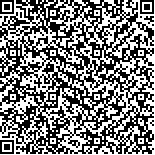| Quote
: |
黎宁,罗跃全,王庆梅,鲜继淑.压疮患者内环境及生化指标与年龄的相关性研究[J].湖南中医药大学学报英文版,2018,38(12):1464-1467.[Click to copy
] |
|
| |
|
|
| This paper
:Browser 2899times Download 1426times |
| 压疮患者内环境及生化指标与年龄的相关性研究 |
| 黎宁,罗跃全,王庆梅,鲜继淑 |
| (第三军医大学第一附属医院, 重庆 400038) |
| 摘要: |
| 目的 研究年龄与压疮患者内环境及生化指标的相关性。方法 对1 752例压疮患者病例资料采取回顾性分析,按不同年龄段进行分组,将不同组患者生化指标进行统计学分析。结果 年龄与压疮分级关联性分析:5~8年龄段与压疮具有关联性,差异有统计学意义(χ2=33.406,r=0.281,P<0.05)。年龄段(1-8)蛋白指标总体比较:总蛋白(P=0.034)、白蛋白(P=0.026)、球蛋白(P=0.031)差异有统计学意义;两两比较显示:年龄段1(24岁以下)与年龄段2(25~34岁)相比,总蛋白差异有统计学意义(P=0.038﹚;年龄段4(45~54岁)与年龄段5(55~64岁)相比,前白蛋白差异有统计学意义(P=0.019);年龄段7(75~84岁)与年龄段8(85~95岁)相比,总蛋白(P=0.009)与蛋白(P=0.014)差异均有统计学意义;年龄段1与8相比,总蛋白(P=0.011)与白蛋白(P=0.013)差异均有统计学意义。其余各年龄段各指标之间比较差异均无统计学意义(P>0.05)。在电解质指标上,年龄段3(35~44岁)与年龄段4相比,血钾差异有统计学意义(P<0.05);年龄段5与年龄段6(65~74岁)相比,血钠、血氯化物差异有统计学意义(P<0.05);其余各年龄段电解质各指标之间比较差异均无统计学意义(P>0.05)。结论 在压疮预防与治疗过程中要结合患者年龄情况,加强对患者内环境及相关生化指标变化的关注,并及时调整护理方案,可有效降低压疮发生率。 |
| 关键词: 压疮 年龄 内环境 生化指标 |
| DOI:10.3969/j.issn.1674-070X.2018.12.025 |
| Received:February 20, 2017 |
| 基金项目:重庆市应用开发技术项目(cstc2013jcsf10010)。 |
|
| Relationship of Age with Internal Environment and Biochemical Indices in Patients with Pressure Ulcer |
| LI Ning,LUO Yuequan,WANG Qingmei,XIAN Jishu |
| (The First Affiliated Hospital of the Third Military University, Chongqing 400038, China) |
| Abstract: |
| Objective To investigate the relationship of age with internal environment and biochemical indices in patients with pressure ulcer.Methods A retrospective analysis was conducted on the clinical data of 1 752 patients with pressure ulcer. Those patients were divided into several age groups. A statistical analysis of biochemical indices was performed among those groups.Results The correlation analysis between age and pressure ulcer grade showed that age between 5 and 8 years was correlated with the incidence of pressure ulcer (χ2=33.406, r=0.281, P<0.05). In terms of protein indices, there were significant differences in total protein, albumin, and globulin levels between age groups between 1 and 8 years (P=0.034; P=0.026; P=0.031); there was a significant difference in total protein level between age group 1 and age group 2 (P=0.038); there was a significant difference in prealbumin level between age group 4 and age group 5 (P=0.019); there were significant differences in total protein and protein levels between age group 7 and age group 8 (P=0.009; P=0.014); there were significant differences in total protein and albumin levels between age group 1 and age group 8 (P=0.011; P=0.013); there were no significant differences in protein indices between any other age groups (P>0.05). In terms of electrolyte indices, there was a significant difference in blood potassium between age group 3 and age group 4 (P<0.05); there were significant differences in blood sodium and blood chloride between age group 5 and age group 6 (P<0.05); there were no significant differences in electrolyte indices between any other age groups (P>0.05).Conclusion Age should be considered in the prevention and treatment of pressure ulcer. To effectively reduce the incidence of pressure ulcer, more attentions should be paid to the changes in internal environment and biochemical indices of patients, and nursing plans should be adjusted in a timely manner. |
| Key words: age pressure ulcer internal environment biochemical index |
|

二维码(扫一下试试看!) |
|


